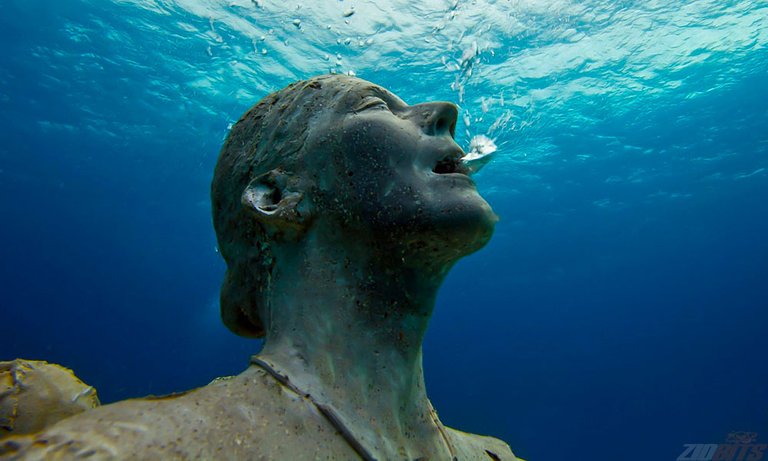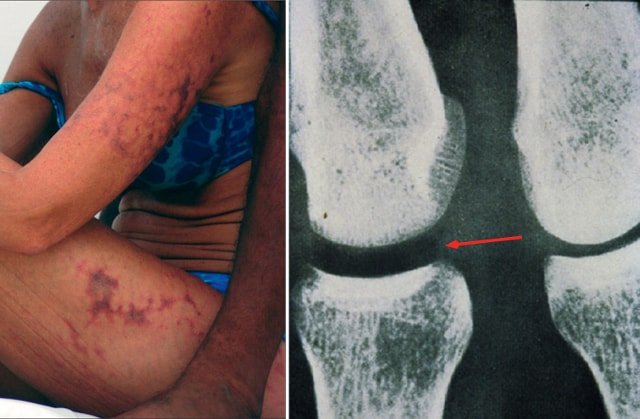You heard it right! Science is moving amazingly fast and now humans can breath under water with our lungs filled with water. This should not be a surprise as when we were still in our mother's womb, we were in the embryonic liquid.So how did we lose the ability and how science brought it back? Interested to know more, so why not hop on for a ride.

(Credit: here)
A little bit of history
When a fetus is growing inside a mother's womb, it is in a sac full of fluid. The fluid is generally referred to as embryonic hemoglobin. It is composed of a different kind of blood which we call Grower I, Grower II, Portland I and Portland II based on the stages of the pregnancy.

(Credit: here)
The Grower I starts forming around the first week of pregnancy and the composition of the liquid keep changing at various stages of the fetus growth so that it come out as a fully healthy baby. The embryonic liquid is mostly composed of zeta, epsilon, gamma and alpha chains. More interested in the subject, you can check here.
Basically, we can appreciate here is that while still in the womb, our lungs were forming and we were in a liquid environment. Our lungs still survived and managed to develop healthily without killing us. In this sense, we can say that our lungs are designed in some way to breath in liquid. Maybe not water but in a specific liquid.
The science behind
Based on the fact that we were born from a liquid environment, scientists have been working to find out how a grown up human can breath in a liquid. They finally have the liquid ready! The liquid is called perfluorocarbons (PFCs) and the special property of the liquid is that it can absorb a lot of gases. Guess what, scientist filled it will oxygen. It is a highly oxygenated PFC.
Now that we have the liquid, how do we use it? A suit was designed that will have an enclosed helmet. The helmet will be filled with the liquid which will cover our mouth, nose and ear cavities. Once we inhale the liquid into our lungs, the oxygen in the PFC is transferred to our lungs and the carbon dioxide generated is transferred to the PFC liquid and taken out into the helmet. This liquid is that regenerated periodically by a gear that we carry on our back. It keeps oxygenating the PFC while removing the carbon dioxide out of the liquid.
The problem of deep sea diving
The diving record depth for a human using standard scuba equipment is 318 m (set by the South African diver Nuno Gomes in June 2005). At this point, the pressure is so high for a human and the temperature is so cold that we start hallucinating and our nervous system stops corresponding properly.
But this is not the biggest problem. At this high pressure, nitrogen and helium is so compressed that it is able to dissolve in the bloodstream much like carbon dioxide in our closed soda bottle.

(Credit: here)
We all know what happens when we open that soda bottle. There is a fizzy sound and we can see bubbles coming out of the liquid. Much the same thing happens to divers when they comes back to the normal pressure on sea level. The gases starts popping out of their blood which can lead to death. This condition is called bends.
This is one of the main reason for our limitation of deep sea diving. Bu what if there was no need for nitrogen in our body?
The uses of PFCs
When filling our lungs with highly oxygenated PFC, we can allow enough time for our body to get rid of the nitrogen. In this way, when going deeper, we do not have to worry about the nitrogen dissolving in our body.
Currently, deep sea divers have to stay in pressurised cabins and the pressure is reduced slowly for the body to adapt again to normal pressure without getting any bends effect.
With oxygenated PFC, not only we can dive deeper but we can also come back up normally and adapt instantly to normal pressure as there was no air in our body but only compressed liquids in the form of our blood and PFC liquid.

(Credit: here)
This has help in deep sea diving in experimental procedures but it has not yet the validation of the World Health Organisation. I guess this should be coming soon as there is one more use of this liquid which is of utmost important.
This oxygenated PFC liquid has been saving human lives. When babies are born prematurely, before 28 weeks, they have difficulty breathing for various reasons. Immature alveoli, the final branchings inside the lung that feed oxygen into the blood, lack vital surfactants which stop the tiny cavities sticking together when we breathe out.
Oxygenated PFC is able to help those babies to breath in a liquid environment till all the internal branching of the lungs are completely formed. These kids are able to live normal lives full of memories afterwards. But the process is used in extreme cases as the full effects of PFC in the body is not well understood.
Conclusion
I was watching the Abyss movie by James Cameron last night and I wanted to know if the last scenes of the movie had any scientific backing to it. I was quite amazed that it is not science fiction anymore.
Science is making exponential leaps nowadays in all domains. The amount of knowledge that we currently have is opening so many branches of physics, chemistry and biology that we have only seen in movies.
I wish that I could be such a brainiac who would discover something but my current live is so full that sharing whatever I find interesting with fellow Steemians fulfills me. Maybe one day, just maybe...
Why not celebrate that science and technology is awesome by playing the Steemit Lotto Game on this post: Steemit Lotto Weekly # 10 - Minimum Pot Size 100 STEEM!!!!

Good luck to everyone 😎
Don't forget to check if you are a winner every Sunday at around 19 00 (GMT)

(created by @readallaboutit)
Wow!!!!!! Mind blown!!!!! I have never gone scuba diving but I've gone snorkeling and I hate breathing through the snorkel. I think this would be awesome to try instead!
There are some risks in scuba diving but in normal cases, you will not go as deep as 300 m below the surface!
I also want to try breathing in the liquid to get the feeling of the effect apart from normally drowning XD
Seriously?
CFCs takes life....PFCs gives life....what a wonderful world
Well in a sense, CFC doesn't take life. This the effect that it has on global warming and destroying the ozone layer.
Don't know if releasing PFC in the ocean will kill the creatures around. I have not found any experiment on this but we never know.
Yea..true..true...you have a point there...Nice post
The is unreal we are evolving thru science. Maybe in the future we will have our Atlantis.
Maybe! I guess science has no limits...
What was science fiction yesterday is becoming a reality today.
We are already on the brink of self driving cars!
That would be awesome. Just enjoying the ride on the way to work while posting on steemit 😀. Science is indeed amazing next thing we know flying cars are hovering around.
Oh!!!! This also on the way!!
Amazon is looking into delivering our goods using drones.
Next thing is to move a human from one place to another using drones and the experiments are already happening!!!!!
We ARE in the future XD
Interesting article. It's funny you mentioned "The Abyss", that's the first thing I thought of from the title. @ironshield
Haha this was the movie I was watching which made me want to check if this thing is real or not!
Really great detail about risks of deep diving. It is not easy to deep sea dive.
This oxygenated PFC liquid has been saving human lives. When babies are born prematurely, before 28 weeks, they have difficulty breathing for various reasons. Immature alveoli, the final branchings inside the lung that feed oxygen into the blood, lack vital surfactants which stop the tiny cavities sticking together when we breathe out.
Oxygenated PFC is able to help those babies to breath in a liquid environment till all the internal branching of the lungs are completely formed. These kids are able to live normal lives full of memories afterwards. But the process is used in extreme cases as the full effects of PFC in the body is not well understood.
Great research you have done and we need more detail research regarding PFC liquid.
It is still in the experimental phase except in the extreme cases of premature babies which some US hospitals perform as a last resort.
Breathing in liquid to fill the lungs, yuck :P
What happens if we consume it by mistake?
Also, just like we sneeze when water goes into our nose, doesn't the liquid have the same effect?
There is a gag reflex that you get the first time. The same reflex like you are going to drown.
You will fill your stomach and lungs with the liquid but the body will not process the liquid.
When you come out of the water, you vomit it the same way as someone who was saved from drowning vomits the water in the lungs and stomach.
Amazing finding! But the idea of being covered with "water" still scares me.
Well for me also, it would be scary to try such a thing. I don't like water in my nose and ears...
But who knows.. we may survive tsunamis like this XD
I can't swim. I don't feel safe in the water even with life jacket.
Very informative! I am amazed how scientist keeps on discovering things like this.
Indeed!!! Science is make science fiction a fact on a weekly basis.
With the exponential growth in science, it can become a daily discovery!